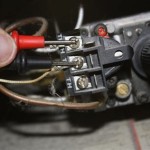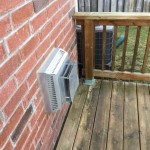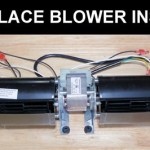Can You Put A Flat Screen TV Above a Gas Fireplace? Considerations and Guidelines
The question of mounting a flat screen television above a gas fireplace is a common one for homeowners seeking to optimize space and create a visually appealing focal point in their living rooms. While aesthetically pleasing, this configuration requires careful consideration of several factors to ensure the safety and longevity of both the television and the surrounding structure. The heat generated by a gas fireplace, if not properly managed, can damage sensitive electronic components within the television, leading to malfunction or premature failure. Furthermore, improper installation can pose a safety hazard.
This article will delve into the potential risks and necessary precautions involved in placing a flat screen TV above a gas fireplace. It will explore the key aspects to consider, including heat output, mounting techniques, ventilation, and alternative placement options.
Understanding the Heat Factor
The primary concern when mounting a television above a gas fireplace is the heat generated by the fireplace. Flat screen televisions are designed to operate within a specific temperature range, typically between 32°F (0°C) and 104°F (40°C). Exceeding this range can cause irreversible damage to the LCD or OLED panel, as well as other internal components such as the power supply and circuit boards. Gas fireplaces, even those designed for aesthetic purposes rather than primary heating, can produce significant heat, particularly directly above the unit.
The amount of heat generated depends on several factors, including the fireplace's BTU (British Thermal Unit) rating, the design of the fireplace, the distance between the fireplace and the television, and the presence of a mantel or heat shield. Fireplaces with higher BTU ratings will produce more heat. Similarly, fireplaces with open fronts radiate more heat compared to those with sealed glass fronts. A mantel acts as a barrier, deflecting heat away from the television, while a properly installed heat shield can further reduce the temperature exposure.
Before considering mounting a television above a gas fireplace, it is crucial to measure the temperature of the wall directly above the fireplace while it is operating at its highest setting. This can be done using a non-contact infrared thermometer. If the temperature consistently exceeds the television manufacturer's recommended operating range, mounting the television directly above the fireplace is not advisable. Even if the temperature is within the acceptable range, it is important to account for potential temperature fluctuations and prolonged exposure.
Another factor to consider is the vertical distance between the top of the fireplace and the bottom of the television. A greater distance allows for more heat dissipation and reduces the risk of overheating the television. It is generally recommended to maintain a minimum distance of 12 inches, and preferably more, depending on the heat output of the fireplace.
Finally, it is essential to understand that heat rises. Even if the temperature reading on the wall appears acceptable, the heat accumulating behind the television can still be significantly higher, potentially leading to damage over time. Regular monitoring of the television's performance, such as checking for display distortions or unusual behavior, is recommended after installation to identify any potential heat-related issues.
Safe Mounting Practices and Ventilation
Assuming the heat factor has been addressed and deemed manageable, the next step involves ensuring safe and secure mounting of the television. The wall above a gas fireplace may be constructed with a variety of materials, including drywall, brick, or stone. The mounting method must be appropriate for the wall's composition to ensure the television is stable and will not fall.
If the wall is made of drywall, it is crucial to use appropriate wall anchors or mount the television directly to the wall studs. Standard drywall anchors may not be sufficient to support the weight of a large flat screen television, especially considering the vibrations and potential movement associated with fireplace operation. Wall studs provide a solid anchoring point and are the preferred method for mounting heavy objects. A stud finder can be used to locate the studs behind the drywall.
For brick or stone walls, specialized masonry anchors are required. These anchors are designed to grip the solid material and provide a secure hold. It is important to use the correct size and type of anchor for the specific material and weight of the television. Drilling into brick or stone requires specialized drill bits and techniques to avoid cracking or damaging the wall. Consider consulting with a professional installer experienced in mounting televisions on masonry surfaces.
Regardless of the wall material, it is essential to use a high-quality, appropriately sized television mount. The mount should be rated to support the weight of the television and be adjustable to achieve the desired viewing angle. Tilt mounts can be particularly useful for mounting televisions high above a fireplace, as they allow the screen to be angled downwards for improved viewing comfort. Swivel mounts offer even greater flexibility, allowing the television to be rotated horizontally for optimal viewing from different locations in the room.
Ventilation is another crucial aspect of safe television mounting above a gas fireplace. Heat tends to accumulate behind the television, so providing adequate ventilation can help dissipate the heat and prevent overheating. This can be achieved by leaving a gap between the back of the television and the wall, and by ensuring there is adequate airflow around the television. Avoid blocking any ventilation openings on the television.
Consider installing a small ventilation fan behind the television to actively circulate air and remove heat. These fans are typically quiet and can be plugged into a standard electrical outlet. Wire management is also important to ensure that cords are not dangling or creating a fire hazard. Use cable ties or a cable management system to keep the cords organized and out of the way of the fireplace.
Alternative Placement Options and Considerations
If the heat output from the gas fireplace is too high to safely mount a television directly above it, or if there are concerns about potential long-term damage, alternative placement options should be considered. The primary goal is to position the television in a location that provides comfortable viewing without exposing it to excessive heat.
One option is to mount the television on a wall adjacent to the fireplace. This allows the television to be viewed from the same seating area without being directly above the heat source. The distance between the television and the fireplace can be adjusted to minimize heat exposure, and the viewing angle can be optimized for comfortable viewing. Consider using a swivel mount to allow the television to be angled towards the seating area.
Another option is to place the television on a stand or console unit in front of or to the side of the fireplace. This provides a stable and easily adjustable placement option. The console unit can also provide storage for media devices and accessories. Ensure that the console unit is made of a heat-resistant material and that the television is positioned far enough away from the fireplace to avoid overheating.
Recessed nooks or alcoves can also be utilized to house the television. These architectural features can provide a natural barrier against heat and help to conceal the television when not in use. Ensure that the nook or alcove is adequately ventilated to prevent heat buildup. Consider installing a ventilation fan to actively circulate air.
Finally, consider the overall design of the room and the placement of furniture when deciding on an alternative location for the television. The goal is to create a comfortable and visually appealing space that is both functional and aesthetically pleasing. A well-designed room will integrate the television seamlessly into the overall decor without compromising safety or viewing comfort.
In summary, mounting a flat screen television above a gas fireplace is possible, but it requires careful consideration of several factors, including heat output, mounting techniques, ventilation, and alternative placement options. Thoroughly assess the heat generated by the fireplace, ensure secure mounting practices, provide adequate ventilation, and explore alternative placement options if necessary. Consulting with a professional installer is recommended to ensure the safe and proper installation of the television.

Can I Mount My Tv Above The Fireplace

Mounting A Tv Above Fireplace 5 Things To Consider
:max_bytes(150000):strip_icc()/should-you-mount-your-tv-over-your-fireplace-4684916-hero-dca49372ef974f78a250977ce62d3a42.jpg?strip=all)
Tv Above A Fireplace Pros Vs Cons
:strip_icc()/decorating-fireplace-styles-hang-tv-over-fireplace-01-3c804285a85f44d6b3f5272be772cdba.jpg?strip=all)
Can You Hang A Tv Over Fireplace Here Are 5 Things To Consider

Can I Mount My Tv Above The Fireplace

ᑕ❶ᑐ What To Consider Before Mounting A Tv Above Fireplace

Mounting A Tv Above Fireplace Is It Good Idea Bob Vila

ᑕ❶ᑐ What To Consider Before Mounting A Tv Above Fireplace

Can I Put A Tv Above Fireplace The Ultimate Guide Bonfire

Can You Put A Tv Over Fireplace Direct Fireplaces
Related Posts








